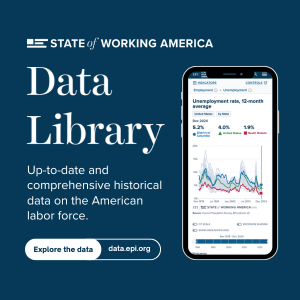The invisible sex
Question: What’s wrong with this story?
“In 1940, when Social Security first paid monthly retirement benefits and the number of private pension plans was just beginning to grow, individuals reaching age 65 lived, on average, for another 13 years. Furthermore, many workers entered the labor force at age 18, immediately after graduating from high school. These individuals could expect to work for 47 years before attaining “normal” retirement age…
Fast forward to 2006: the demographics of pension planning have changed significantly. Approximately two-thirds of eligible non-disabled workers claim Social Security retirement benefits at age 62 rather than 65, and they enter the labor force at a later age, often at age 21 or even older, rather than age 18. This leaves about 40 years of work before an expected retirement at age 62, at which point remaining life expectancy is approximately 20 years.”
Answer: It ignores women, except when including them makes the situation seem worse.
The hypothetical “individuals” in the first paragraph appear to be men, since few women born in 1875 spent 47 years in the paid workforce before retiring at 65 (it’s also doubtful whether their male counterparts worked that many years, but that’s another story). Likewise, the life expectancy of a 65-year-old man in 1940 was thirteen years. In the second paragraph, however, the life expectancy cited is for both sexes, which has the effect of exaggerating the increase in life expectancy in retirement since older women live roughly two years longer than men.
The quote is from an American Academy of Actuaries brief published in 2006. It’s still relevant, however, because the thrust of the argument—that we need to raise Social Security’s full retirement age because people are living longer but retiring at younger ages—has become the conventional wisdom in Washington.
You could argue that the statistics cited are appropriate since the workforce in 1940 was largely male, whereas in 2006 it was more evenly split between men and women. But it’s no accident that the influx of women into the paid workforce goes unmentioned, since acknowledging it would require the authors to paint a more complicated, and rosier, picture.
The rise of two-earner couples has been a boon for Social Security because it increased the number of workers contributing to the system while decreasing spousal benefits, which aren’t paid for by higher taxes on married workers. Meanwhile, it lowered the average age of retirement, since women have historically retired at younger ages than men (often at the same time as older husbands).
The resulting decline in the average retirement age was especially pronounced in the 1970s and 1980s, when the trend was toward earlier retirement for both sexes. But the last two decades have seen a reversal of this trend, and the labor force participation rate of older workers is now as high as it was half a century ago. In any case, whether people choose to retire early is irrelevant to discussions of Social Security’s finances because monthly benefits are reduced for early retirement in order to equalize the value of lifetime benefits.
A focus on the average retirement age misses the bigger story of how much more Americans are working and contributing to Social Security over the course of their lifetimes, thanks to women. It also ignores the fact that Social Security’s full retirement age is already increasing, so the ratio of working years to covered retirement years is roughly the same as it was in the early 1980s when the system was in balance. Last but not least, it ignores the fact that people are encouraged to continue working after claiming benefits. If you exclude people still working for pay as well as those who weren’t in the workforce to being with, such as full-time caregivers, the average retirement age is 65.5, not 62 as is often claimed.
Enjoyed this post?
Sign up for EPI's newsletter so you never miss our research and insights on ways to make the economy work better for everyone.
